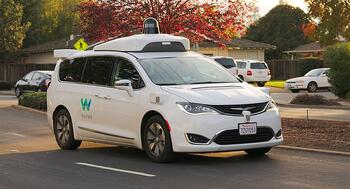
Urban planning guru says driverless cars won’t fix congestion,” says the New York Times. Naturally, the Times is referring to Peter Calthorpe, one of the few people who might be considered an urban planning guru and the one who has the most to lose if driverless cars are successful.
In the 1980s, Calthorpe developed a vision of what cities should be like. That vision combined the five-story apartments in Greenwich Village, which was built in the 1890s and praised in Jane Jacobs’ 1961 book, the Death and Life of Great American Cities, with the idea of jobs and dense housing being located in regional and town centers scattered around the urban area, which was the way cities were built in the 1920s. Each of the centers, Calthorpe thought, would be walkable like Greenwich Village and the centers would be connected with one another by mass transit such as light rail.
In other words, Calthorpe’s vision was already 60 to 90 years out of date when he thought it up. It is even more out of date today. In most urban areas, only about 30 percent of jobs are located in various centers, with the other 70 percent scattered finely across the landscape and virtually inaccessible to mass transit.
Of course, Calthorpe decries the modern city as “sprawl.” Now, driverless cars come along and Calthorpe sees that they are likely to promote even more sprawl and threaten his vision. Contrary to the New York Times article, Calthorpe admits (in an article written last year in Urban Land) that driverless cars will allow people to escape congestion by living further away from urban centers — more sprawl.
For Calthorpe, autonomy is acceptable only if it reinforces, not threatens, his vision. So he supports driverless buses and driverless rapid transit. Such larger vehicles make sense only if most people and jobs are located in the downtowns and centers on which Calthorpe has built his career. Which means they don’t make sense at all for most people in today’s cities, regardless of Calthorpe’s wishful thinking.
Calthorpe argues that the advent of driverless cars will result in more single-occupancy and zero-occupancy vehicles congesting his regional centers. But that will happen only if those centers get to be more important than they are today. If instead the centers decline in importance, which has been the trend for the last seventy or so years, then there should be plenty of room for the vehicles people need to transport themselves to their well-distributed jobs, shops, and other destinations.
The one thing we know about driverless cars is that no one really knows all of the effects they will have on our cities. Maybe they will really reduce congestion in dense areas by reducing delays at intersections and thus lead to a revitalization of some of those centers. Maybe they will enable more people to escape the growth restrictions set by planners that have made housing so expensive. Maybe something completely different will happen. The Antiplanner will be happy no matter what the result so long as gurus like Calthorpe aren’t given the power to try to impose their archaic visions on everyone else.
This piece first appeared on The Antiplanner.
Randal O’Toole (rot@ti.org) is a senior fellow with the Cato Institute and author of the new book, Romance of the Rails: Why the Passenger Trains We Love Are Not the Transportation We Need, which was released by the Cato Institute on October 10.
Photo: Dllu [CC BY-SA 4.0 ], from Wikimedia Commons













Predicting the future is really difficult
"The one thing we know about driverless cars is that no one really knows all of the effects they will have "
on everything.
Cities. Burbs. Rural.
Car ownership.
Commuting patterns.
Dave Barnes
+1.303.744.9024